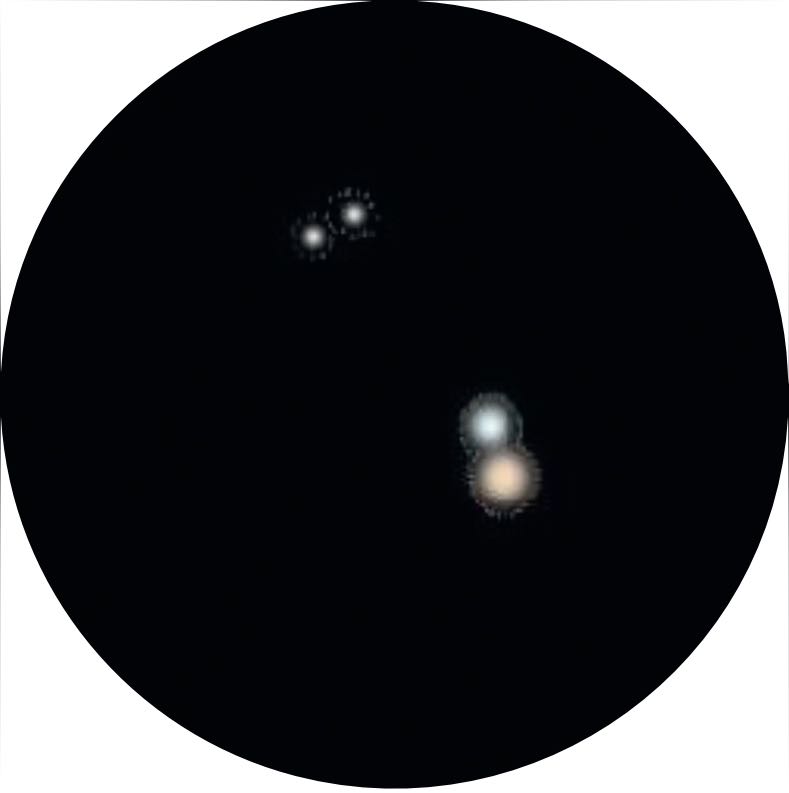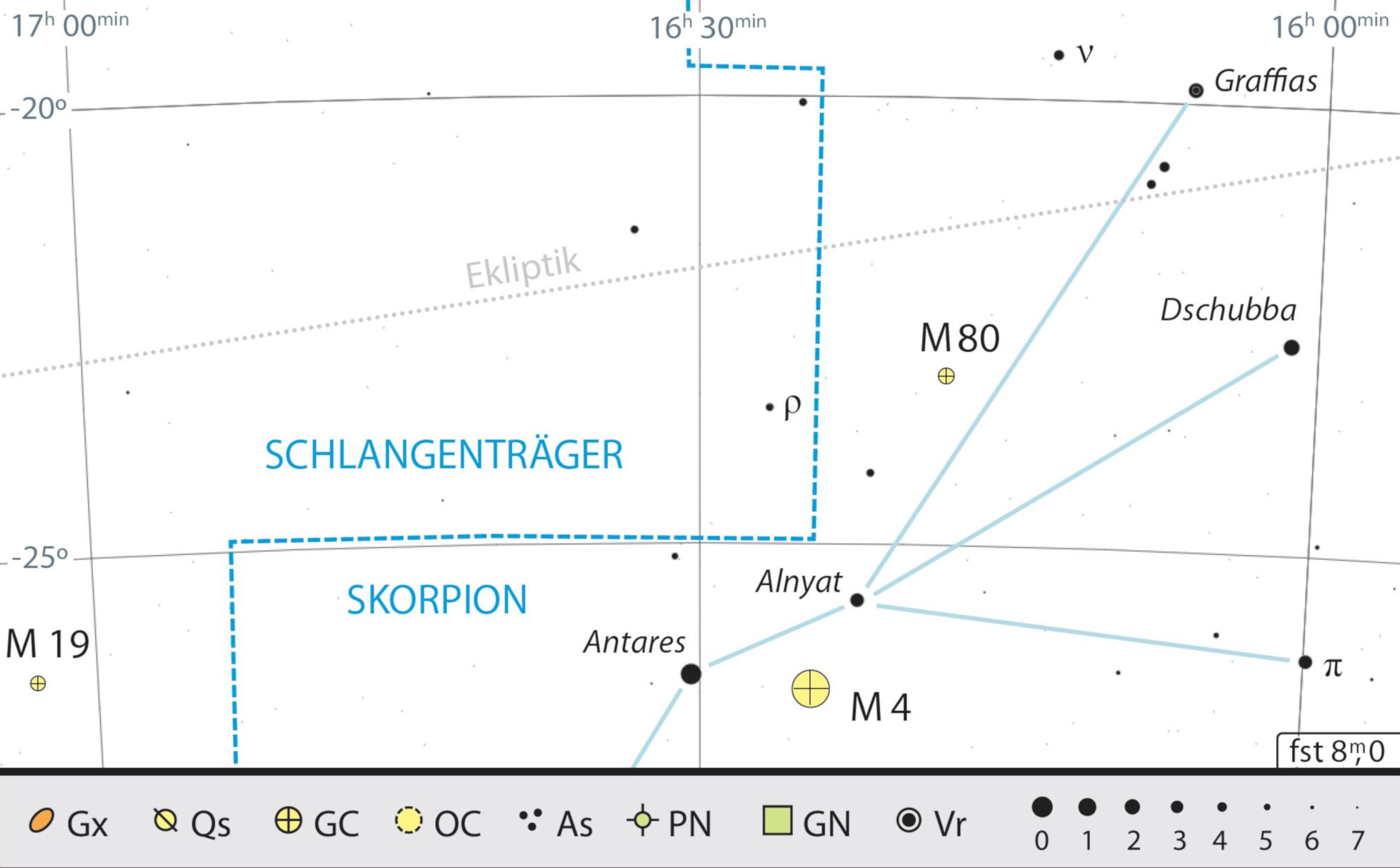Double pairs in Scorpius
The quadruple star system Nu Scorpii requires a good view towards the horizon and calm air. Then, with larger telescopes, the stars can be resolved.
 The Blue Horsehead Nebula IC 4592 in Scorpius (north
is at the bottom). The star ν Scorpii is located on the bridge of the nose and provides the bluish colour. Below the horse’s ears you can see the equally bluish nebula IC 4601. Scott Rosen
The Blue Horsehead Nebula IC 4592 in Scorpius (north
is at the bottom). The star ν Scorpii is located on the bridge of the nose and provides the bluish colour. Below the horse’s ears you can see the equally bluish nebula IC 4601. Scott Rosen Drawing of ν Scorpii as seen in a telescope. D. Blane
Drawing of ν Scorpii as seen in a telescope. D. Blaneν Scorpii is a quadruple star system, which is often compared to the Double Double ε Lyrae. The first pair can be resolved with just 25 times magnification: a magnitude 4 component resolves at a comfortable distance (41") from its slightly fainter magnitude 6.3 companion. Both components also have companions, but their resolution is much more difficult and requires a much larger aperture.
With a 200mm telescope and 200 times magnification, a third component could be surmised but could not really be successfully resolved. So the observer needs not only a good view of the horizon, but also a lot of patience.
Low on the horizon
ν Scorpii is located at a declination of –19°, about as far south as M41. If you are already able to observe this open cluster close to the horizontal in constellation Canis Major, then you can venture on a summertime excursion to Scorpius. Antares is a suitable starting point, which can be seen over the horizon in the summer months together with the stars at the scorpion’s pincers, π, δ and β Scorpii. If you are in the city, with luck you may be able to exploit a gap between buildings. The advantage is that ν Scorpii is relatively easy to find: from β Scorpii, the northernmost of the three pincer stars, the telescope only needs to be panned 1.5° to the east to a prominent triangle consisting two magnitude 7 stars and one of magnitude 4 star. The brighter star is our target: ν Scorpii.
 Location map for ν Scorpii and M4. Kai v. Schauroth
Location map for ν Scorpii and M4. Kai v. SchaurothHorsehead Nebula in Scorpius
When a Horsehead Nebula is mentioned, everyone immediately thinks of the distinctive object in the constellation of Orion. Few people are aware that there is also a nebula in constellation Scorpius, whose shape also resembles a horse’s head: IC 4592. This nebula is particularly distinctive due to its predominantly bluish colour. Located on the nose of this horse, star ν Scorpii, is responsible for the colour. However, you’ll need a very dark sky and a southern location in order to see the Blue Horsehead Nebula close to ν Scorpii.
Author: Karl-Peter Julius / Licence: Oculum-Verlag GmbH
